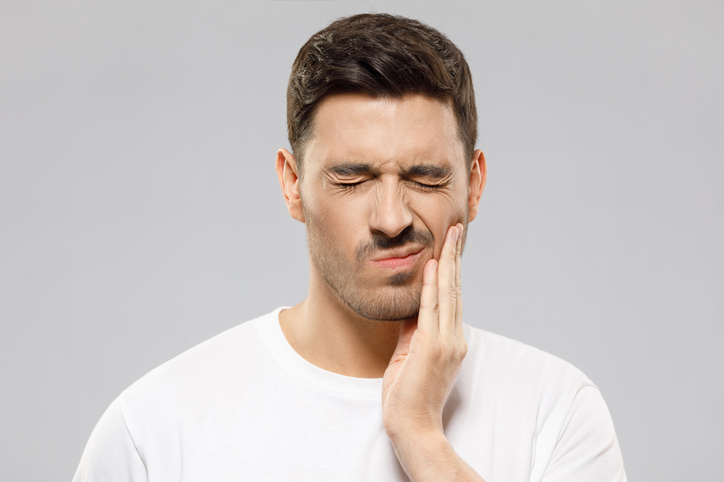
Orofacial pain is usually attributed to dental issues, so the good news is that it’s very treatable!
Orofacial pain can be quite debilitating, even interfering with your ability to do everyday tasks. The pain may be felt in the mouth and jaw, in front of the ears, from the eyes downward, and even in the neck. But to manage orofacial pain, you’ll need to pinpoint the exact cause.
Unfortunately, that’s easier said than done since facial pain can be attributed to many different causes. A migraine, for example, often results in orofacial pain. But more than likely, the pain is due to tooth decay, pulpitis (inflammation in the tooth’s inner pulp), an abscess, or a misaligned jaw. In fact, the University of Florida Health estimates that 95% of orofacial pain can be traced to dental conditions. Below, we concentrate on dental causes of orofacial pain and temporomandibular joint dysfunction (TMD), another leading cause.
Why does your mouth hurt?
Orofacial pain can take several forms. It can range from a dull, constant ache to a sharp jolt of pain. You may also feel a burning sensation. The pain may surface when you bite into hot or cold foods or chew. Tooth decay, a damaged tooth, gum disease, or an infection can cause tooth sensitivity and problems when you eat.
If the pain is persistent and severe, it could be due to an infection, injury, or tooth decay. Sinus headaches and teeth grinding can cause a dull ache in the oral cavity. Talk to your dentist, as they can identify the cause and suggest appropriate treatment.
Orofacial pain & TMD
Besides dental issues, a common cause of facial pain is TMD. TMD refers to a disorder within the joints connecting your jaw to your skull, also known as the temporomandibular joints. The muscles and ligaments around the joints allow your jaw to move. When the joints don’t work together smoothly, the muscles may spasm, and the joints become inflamed, leading to:
- Pain in the jaw, face, and neck
- Ear aches or ringing in the ears
- A clicking sound when eating or speaking
- Limited range of motion or a locked jaw
- Facial fatigue
- Headaches
Common TMD causes include arthritis, an injury to the jaw that dislocates it, or an infection. Teeth grinding can also lead to the disorder. In some cases, the jaw may exhibit a severe malocclusion or misalignment between the top and bottom teeth. Malocclusion can affect the temporomandibular joints, leading to pain and other symptoms.
Managing orofacial pain
Finding the cause of the orofacial pain can help manage the discomfort. If it’s traced to a dental issue, you can relieve the pain by undergoing a root canal, filling the cavity, or restoring the troublesome tooth with a crown. Medication can help manage the pain, as well.
TMD pain can be managed in several ways. Malocclusion, for example, can be helped with a dental appliance called a mandibular advancement splint or orthodontic treatment.
You may also find relief from TMD pain by:
- Exercising your jaw to increase the joints’ mobility.
- Limiting jaw movements that cause pain, such as yawning, chewing gum, and shouting.
- Keeping your jaw as relaxed as possible through meditation and yoga.
- Avoiding bad habits that exacerbate the pain, such as teeth clenching and grinding.
Whatever the cause of your orofacial pain, your first appointment should be with a dentist. A proper diagnosis and treatment plan can get you on the road to eating and speaking free of pain.
Treat your oral pain
Schedule an appointment at Espire’s Oklahoma City location today! Our highly trained dentists can diagnose your oral pain and recommend treatments. Don’t live near our Oklahoma City office? Find one of our other locations near you.
Oklahoma City, OK
12448 St Andrews Drive
Oklahoma City, OK 73120
